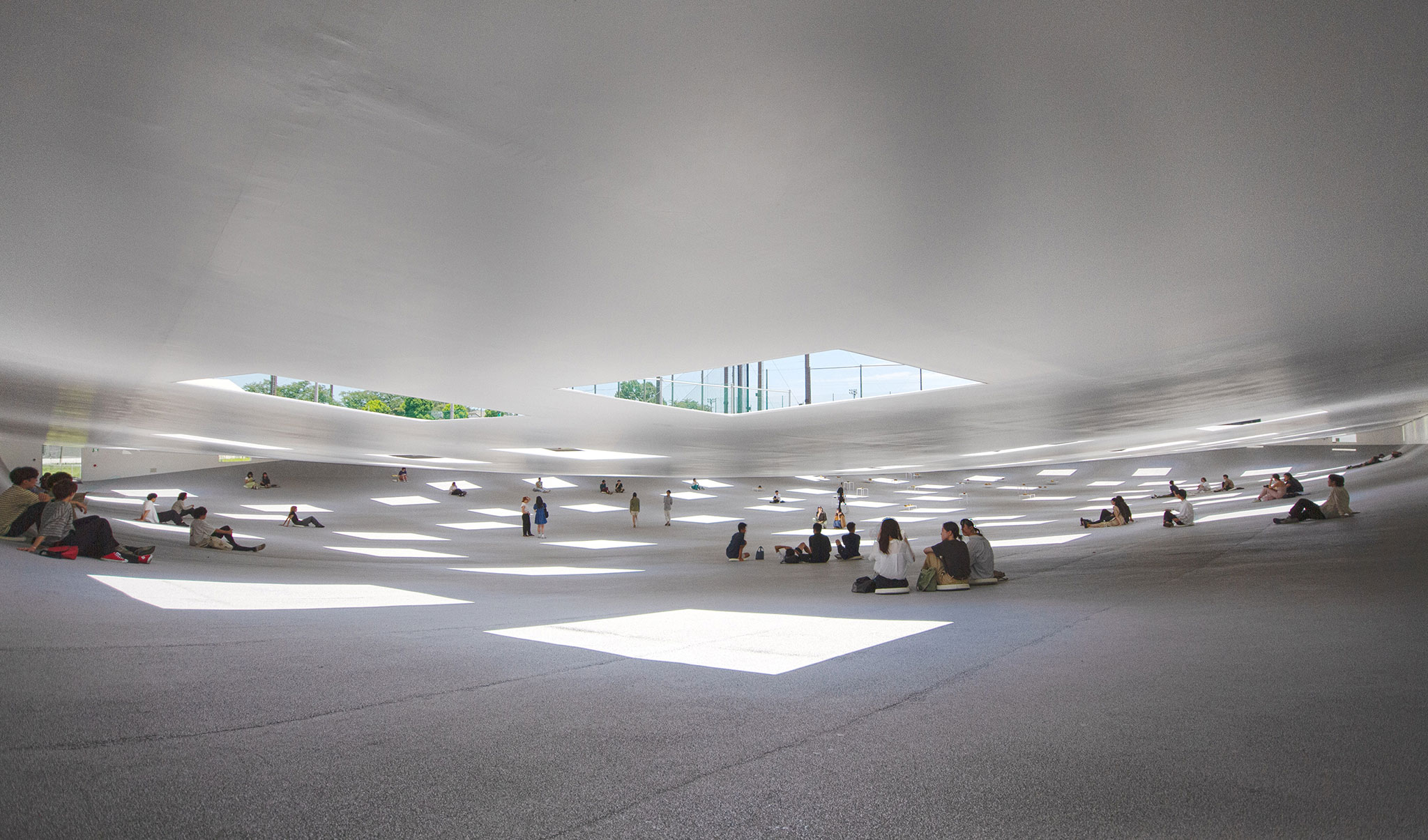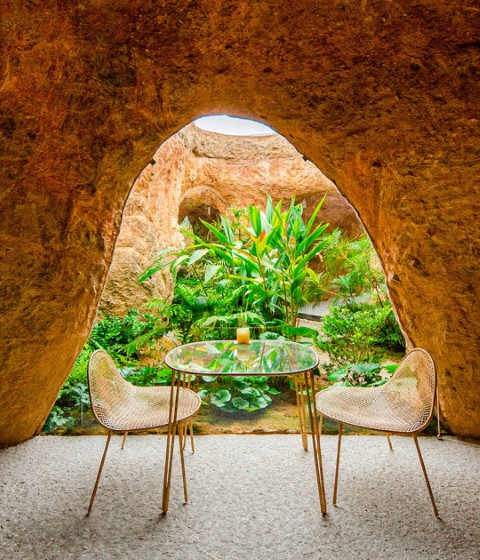For Ishigami, architecture is an open field of infinite possibilities that extends into every area of life, raises all the essential questions, and should be considered from a perspective that is as scientific as it is artistic. Apparently liberated from the rules and constraints of architecture, Ishigami predominantly finds the context for his projects in nature. And he has a continuing focus on the reinterpretation of the boundary between landscape and architecture.
His conceptual thinking is shaped by an urge to interweave architecture with the “natural” and to stretch the existing frontiers between design, architecture, and the environment. With his visionary designs, whose aesthetic is characterized by their concentration, transparency, and simplicity, Ishigami is embarking upon a holistic search for an architecture for the future, in which the life of society is structured according to organic principles.

KAIT Plaza by Junya Ishigami. Photograph by junya.ishigami+associates.
Ishigami’s major projects include KAIT Workshop for the Kanagawa Institute of Technology (Atsugi, Japan, 2008); the House of Peace in Copenhagen (2014); the Chapel of the Valley in Shandong (China, 2016); the Art Biotop Water Garden (Tochigi/Japan, 2018); and his pavilion for the Serpentine Gallery (London, 2019).


























